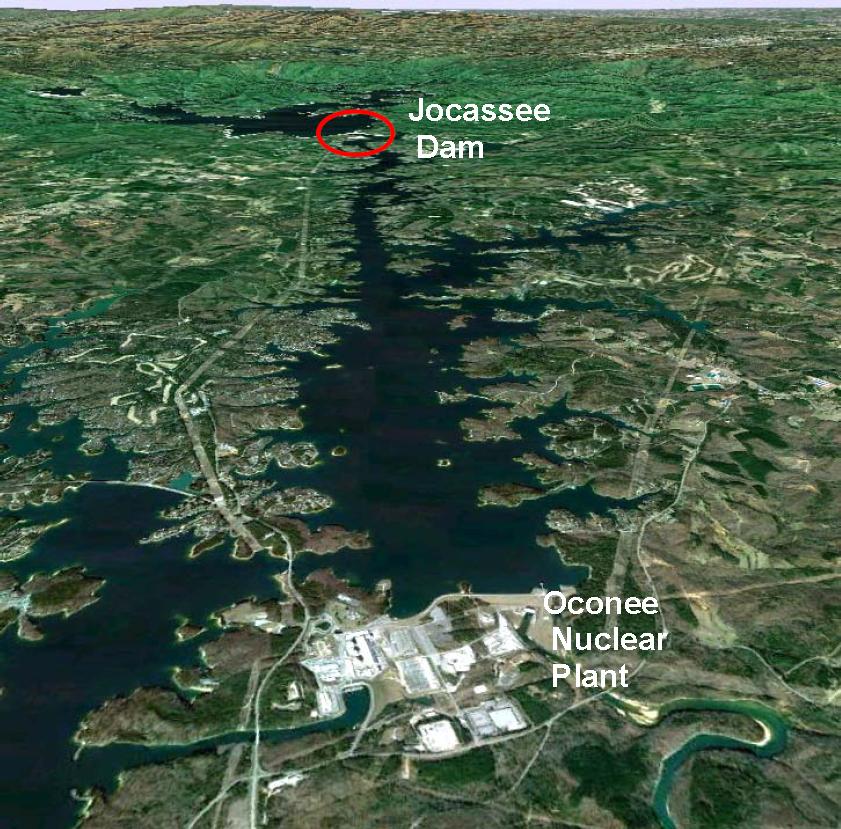The Huffington Post reported on September 14, 2012, that the Nuclear Regulatory Commission (NRC) has known for several years about a flooding threat that could trigger all three reactors at the Oconee nuclear plant in South Carolina to melt down. The Huffington Post’s account included a link to a letter to the NRC’s Inspector General from the NRC’s primary author of a lengthy report on flooding hazards.
In his letter, this NRC staffer alleges that the NRC improperly withheld information about this hazard from the public.
These issues are very grave.
Last year’s disaster involving three reactor meltdowns at Fukushima Daiichi was caused in large part by flooding that disabled all the emergency systems needed to cool the reactor cores. The potential hazard at Oconee is all too similar.
Because the NRC is allegedly covering up a nuclear plant hazard, it is imperative that the NRC’s Inspector General promptly investigate this matter and release its findings in a publicly available, un-redacted report.
Here’s a summary of what I’ve been told – from reliable sources – about the matter.
The Oconee nuclear plant is located about 12 miles downstream of the Jocassee Dam (see figure above). Oconee has three pressurized water reactors, each similar to the reactor that melted down at Three Mile Island in 1979. Oconee is the only nuclear power plant in the United States that does not rely on emergency diesel generators to supply electricity to reactor core cooling equipment if the normal source of electricity becomes unavailable. Instead, Oconee gets backup power from the nearby Keowee hydroelectric dam. Backup power from Keowee is supplied to the Standby Shutdown Facility (SSF) housing the equipment needed to cool the reactor cores when the normal power source is lost.
Duke Energy, the plant’s owner, has known since at least 1992 that the 5-foot tall flood wall protecting the SSF is not high enough to prevent equipment inside the SSF from damage if the Jocassee Dam fails. The NRC has known about this situation since at least 1996.
If the Jocassee Dam failed, the three operating reactors could melt within about 10 hours and the containments could fail within 60 hours. In that case, more radiation could be released than escaped following the three reactor meltdowns at Fukushima.
The odds that dams constructed like Jocassee fail have been calculated to be 2.8×10-4 per year, or about 1 in 3,571 chance of failure per year. Oconee is licensed to operate for about another 20 years. The odds of the Jocassee Dam failing over that period are higher than a 1 in 200 chance. These may sound like good odds. But the chance that a tsunami wave higher than its protective seawall would strike Fukushima were reported at around a 1 in 1,000 chance per year. Japan is paying a huge cost for that long shot coming in.
I have also been informed that plans to heighten the protective flood wall at Oconee originally promised to be completed by 2013 have apparently slipped to 2017.
The NRC evaluated this Oconee hazard as well as hazards facing several other nuclear plants from postulated dam failures. The NRC’s evaluation study was reviewed by the Department of Homeland Security (DHS). DHS informed the NRC that nothing in the study needed to be redacted for security reasons. But NRC heavily redacted the report any way before making it publicly available.
The NRC’s Inspector General has to get to the bottom of this matter as quickly as possible. If the Inspector General substantiates the allegations that NRC improperly withheld information from the public, the Congress needs to step in and forcefully remind this agency that such performance will not be tolerated.
NRC must not be allowed to hide bad news and only release the good, fluffy stuff. After all, the NRC isn’t the promotional arm of the nuclear industry. Or at least, it isn’t supposed to be.
Oconee cannot happen in Japan.
Oconee can happen in South Carolina.
It appears that someone needs to intervene to protect the people of South Carolina from Duke Energy and NRC whistling hand-in-hand past the graveyard.

